Mount Rushmore is manmade, etched from the granite cliffs of South Dakota’s own Black Hills. But the Precambrian rocks making up the Black Hills were birthed from a complex geological history involving mountain building, volcanic activity, and erosion.
It is important to recognize that not all Precambrian rocks are the same. Geologists recognize that a wide variety of geological and environmental processes were responsible for producing Precambrian rocks. This has lead to the formation of diverse rock types, structures, and other Precambrian peculiarities. In order to place these unique features of the Precambrian into their proper geologic context, geologists use the geologic column.
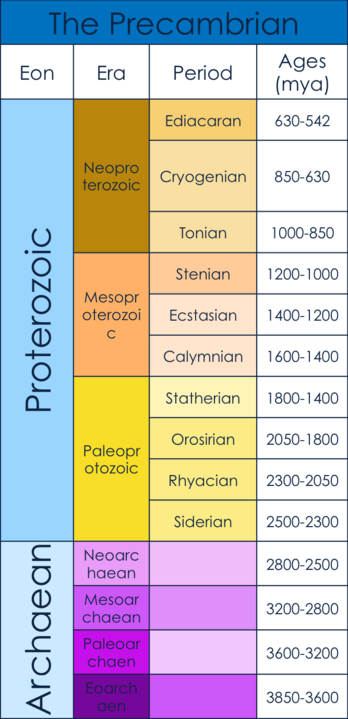
Thinking Like a Geologist
When geologists refer to the geologic column, they are referring to the rock layers found around the earth layer upon layer like the pages of a book. At the broadest scale, we can divide the geologic column into two main parts: the Precambrian and the Phanerozoic. Most of the fossil creatures familiar to us from films and museums come from the Phanerozoic. Yet the seeming wasteland of the Precambrian has plenty of mysteries of its own, so let us zoom in for an even closer look. For the sake of simplicity, we will divide the historical sequence within the Precambrian into five main parts. These are the Neoproterozoic, Mesoproterozoic, Paleoproterozoic, the Archean, and the Hadean.
Our goal here is to summarize the broad strokes of the Precambrian geologic record and its unique features. This will better prepare us to differentiate between the raw data and the conclusions we will make about that data later on. Upcoming in this series, we will use these unique features that characterize the Precambrian to tell its history.
It’s important to note as we proceed, when discussing matters of age, we are only doing so in the relative sense. For example, Rock A is older than Rock B based on its order of formation. As such, we will discuss the main segments of the Precambrian starting with the youngest and ending with the oldest. We will discuss absolute ages for these rocks (4.5 billion years versus <10,000 years) in part 4 of this series.
Basement of the Continents
When: Archean to Mesoproterozoic
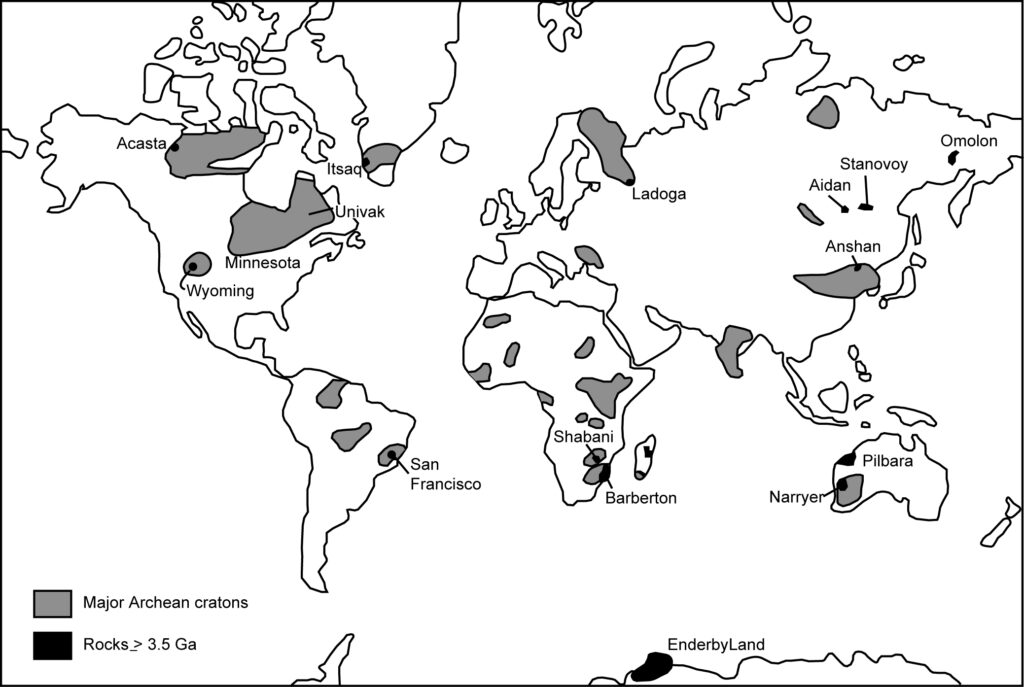
Just as your basement may serve as the foundation for the rest of your house, cratons are the foundation of our continents. Upon them, other rocks have been laid down. Cratons are usually crystalline basement rock composed of materials such as granite and schist. Throughout their geologic history, they have remained largely unchanged since their origin. You can still see cratons exposed in places like the very bottom of the Grand Canyon, where we refer to them as Vishnu Basement Rocks.
Craters Galore
When: Paleoproterozoic to Neoproterozoic
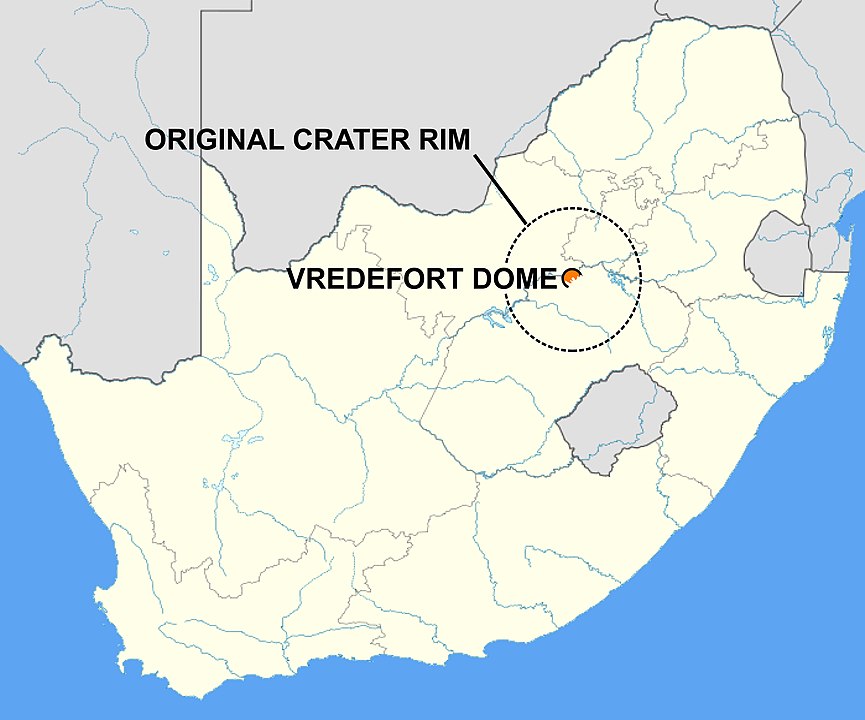
Craters from asteroid and comet collisions pocket the earth’s surface from various times throughout its history. But among the many craters within the Proterozoic, one stands out as the largest and oldest crater ever found on our planet. Called the Vredefort Crater, it is 43 miles across.1 However, it originally measured a whopping 160 miles in diameter upon impact of an asteroid 6-9 miles across. To put this into perspective, imagine that someone chucked the Los Angeles International Airport at the earth and created a crater the size of the Isle of Wight! The third largest crater on planet Earth, Sudbury Basin, is associated with Paleoproterozoic rocks. It measures 81 miles across and is located in Ontario, Canada.2
Stromatolites
When: Archean to Neoproterozoic
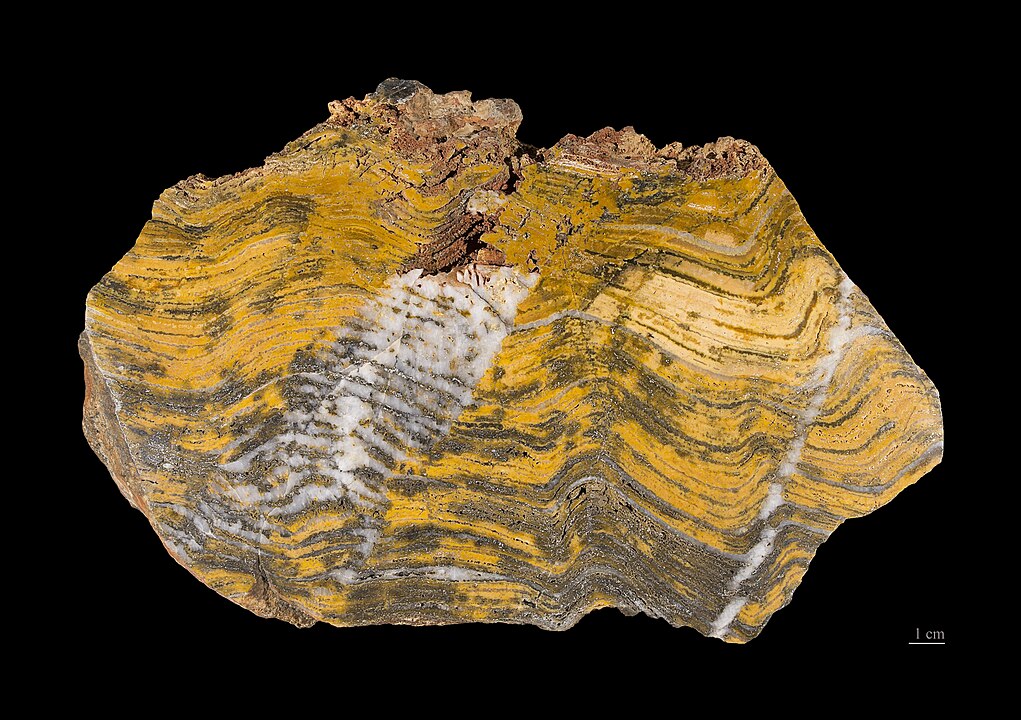
Stromatolites are fossilized layered structures. They formed underwater when sediment grains became trapped, bound, and cemented together. They come in a variety of shapes and sizes, from cones and mushrooms, to domes and columns. There are even some that form branching structures. Though they are very rare today, we can still find them in places like Shark Bay in Western Australia. The Mesoproterozoic contains the highest number of stromatolites anywhere in the geologic record.3
Diamictites
When: Neoproterozoic
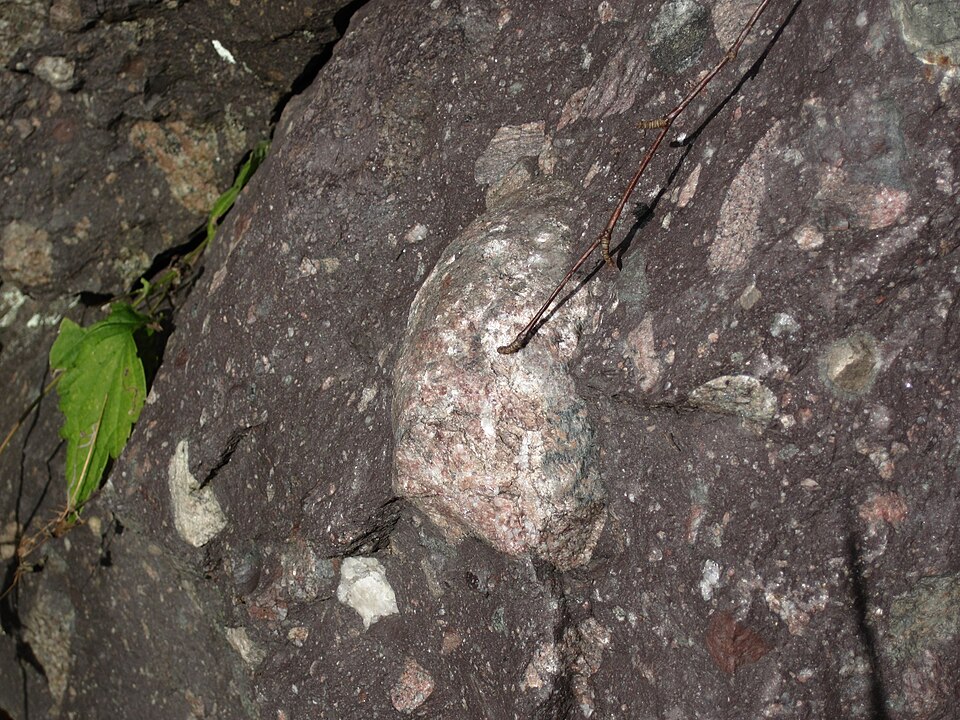
Near the top of the Neoproterozoic, there are accumulations of poorly or unsorted sediments. These sediments, ranging in size from tiny grains of clay to massive boulders, cemented together in a mass of mudstone or sandstone that geologists call diamictites. They form when a powerful force, such as glacial activity or an underwater landslide, scrapes sediment off a surface. This sediment is transported, accumulates elsewhere, and is buried. Here, it hardens into rock. These Neoproterozoic diamictite deposits formed around the planet at roughly the same time.
The Great Unconformity
When: Neoproterozoic to the Sauk Sequence
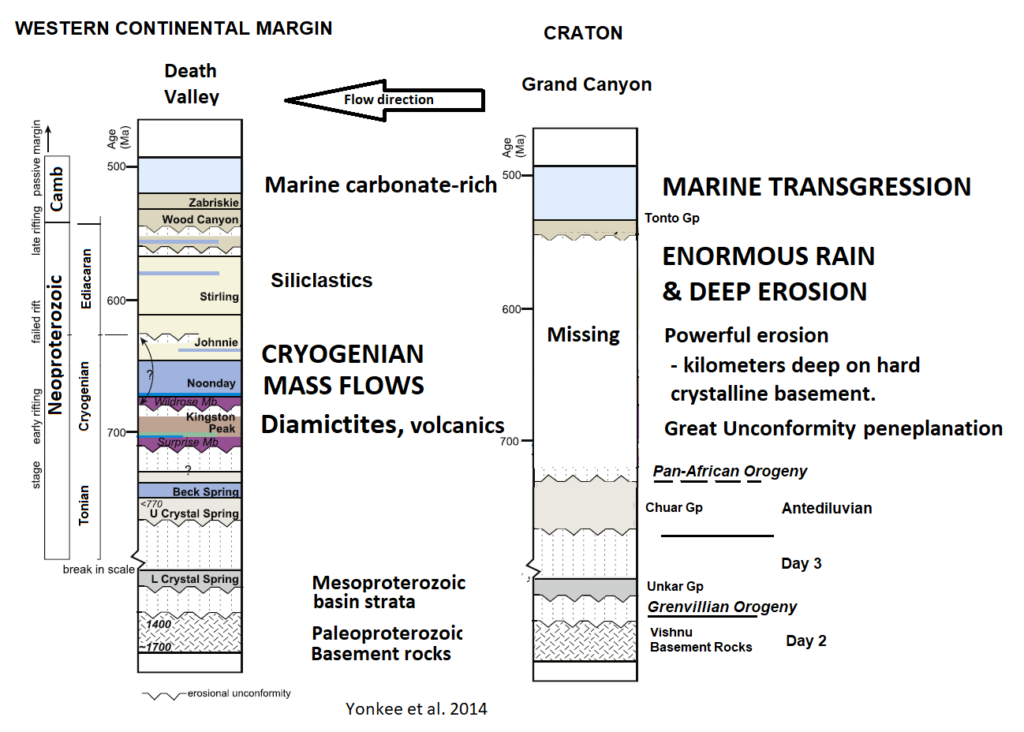
Geologists note that in many places the Precambrian comes to an abrupt end―an erosional surface found all around the world separating the Precambrian crystalline basement rocks from the sediment layers above.4 It is almost like someone took an icing scraper and scraped thousands of feet of sediment from off most of the continents.
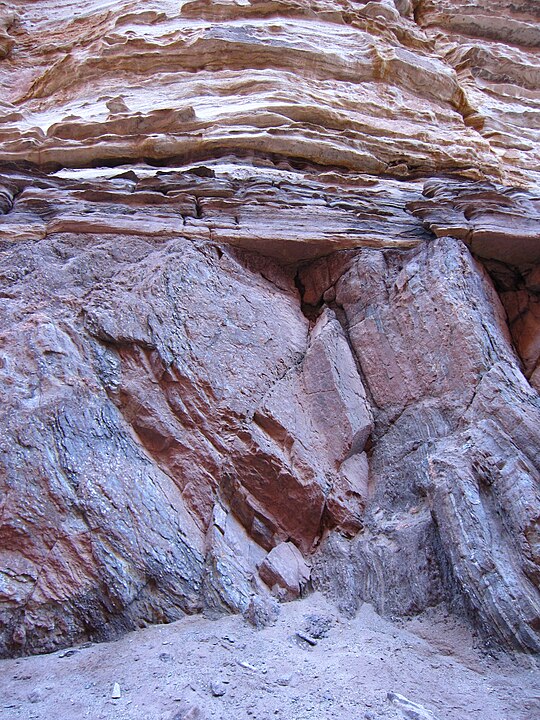
Called the Great Unconformity, this erosion surface represents a package of rock layers that would have been kilometers deep in some places―entire chapters of Precambrian history―that have been subsequently scraped off the continents and dumped what was ocean floor at the time.4 This left planed off, beveled continents in their wake. Something very significant and unusual must have happened to end the Precambrian and for sediments to be laid down on top of it.
Directly above the Great Unconformity, we find a sequence of sediment layers arranged by content size. Massive boulders are at the bottom, followed by sandstone, mudstone, and finally fine-grained limestone.5 This unusual series of layers is called the Sauk Sequence, and it is also found all around the world. The end of the Precambrian is also noteworthy for the prolific appearance of shelled organisms, otherwise known as the Cambrian Explosion, so named because it is the base of the Cambrian layer above.6
Let There Be Life
When: Paleoproterozoic to Neoproterozoic
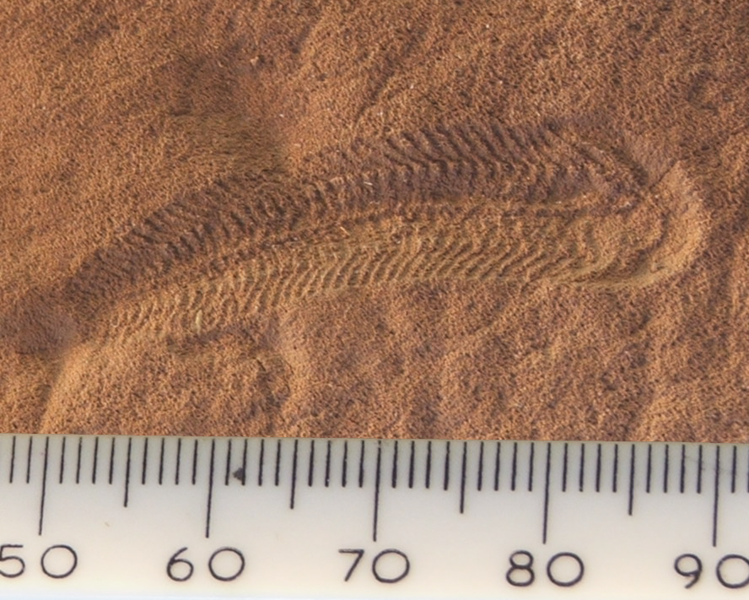
Once considered void and lifeless, we now know of a diverse array of ancient life forms from Proterozoic rocks around the world. Among these, we find the earliest appearance of multicellular algae.7 Some Neoproterozoic rocks, preserved in isolated regions, contain the earliest appearance of macroscopic lifeforms. We’ve met these before. They are the alien-looking Ediacaran fauna that turned the geologic world on its head in 1956. While generally quite rare, paleontologists discovered a treasure trove’s worth of them in the Ediacaran Hills, which lended its name to fossils in this part of the geologic record.8
Marvels of Geology
When: Archean to Neoproterozoic
The Archean, which contains the oldest sequence of rock layers on the planet, is characterized by two major types of rocks. The first, komatiites, and the second, granite. Komatiites are rare volcanic rocks rich in magnesium, often containing a common green mineral called olivine. Komatiite layers often alternate with other types of volcanic and sediment layers in massive sequences called greenstone belts. The second rock type, granite, is a type of igneous rock, formed when molten magma recrystallizes deep beneath the earth’s surface. Chemically speaking, Archean granites differ from granites found further up in the geologic record. They are rich in sodium. Incredible heat and pressure has altered many deposits of both types of Archean rocks, turning them into metamorphic rock.
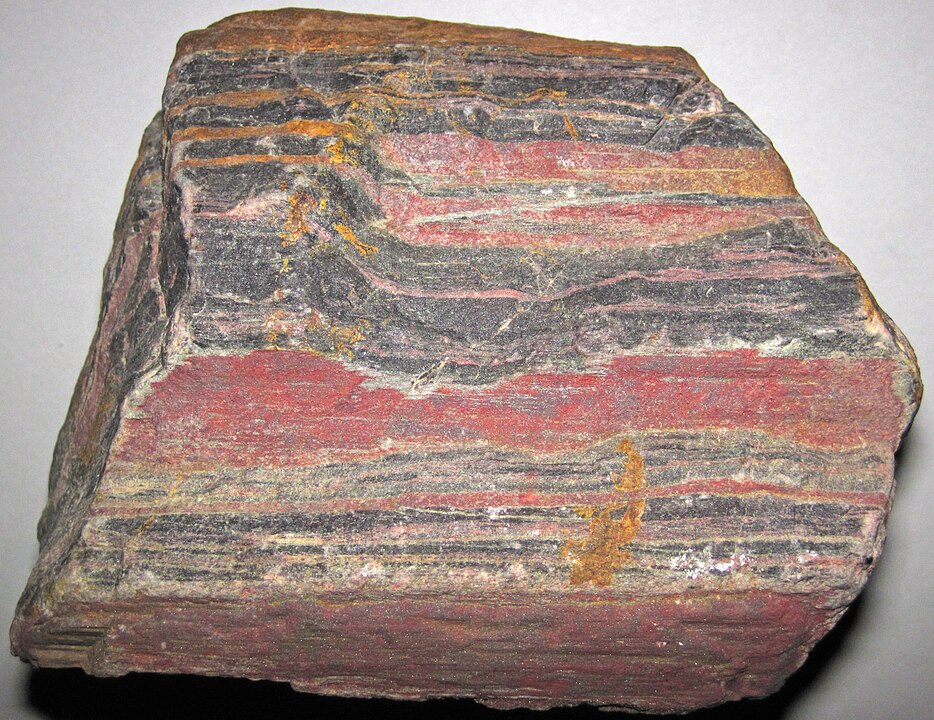
Many of our technological advancements rely on resources unique to the Precambrian rocks. Banded iron formations (BIFs) occur in Archean, Paleoproterozoic, and Neoproterozoic rocks. Yet they are absent in Mesoproterozoic rocks, and have not formed since the Neoproterozoic. We use metals derived from BIFs to make stainless steel and gold jewelry. Nickel sulfide can be found in komatiites. Chromium (which is used to harden steel) is also found in Archean rocks.
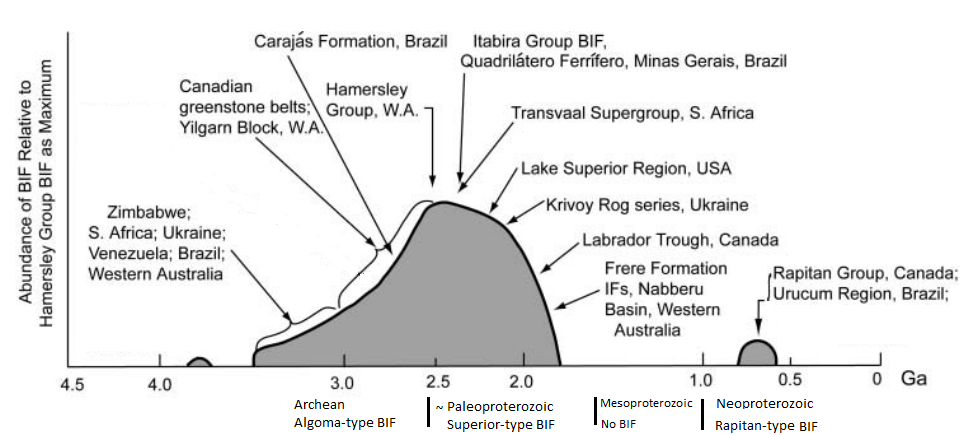
Dance of the Continents
When: ? to Today
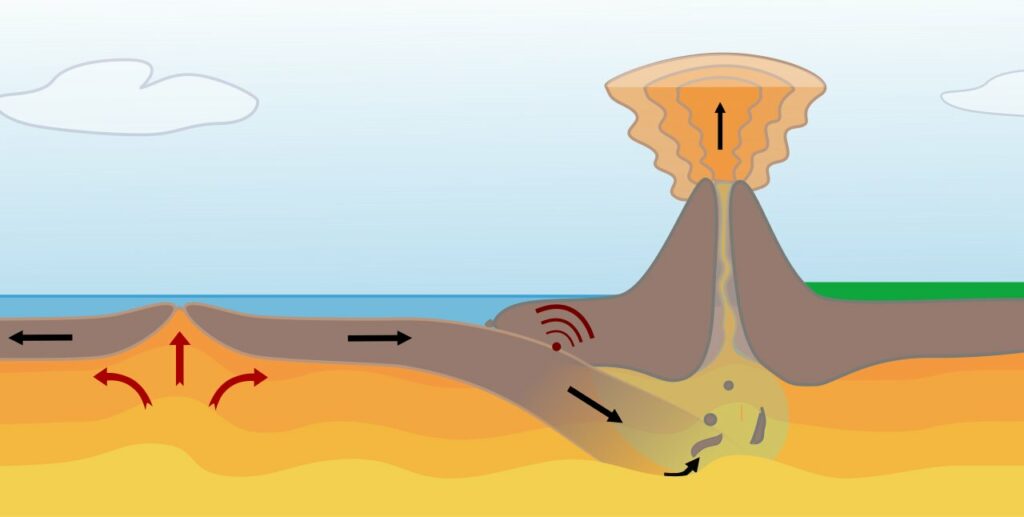
Right now, the continent beneath your feet is moving, usually at about the same speed your fingernails grow. There are two primary forces behind this movement: seafloor spreading and subduction. Subduction and seafloor spreading are the primary mechanisms behind plate tectonics, a geologic model developed to explain how giant fragments of the earth’s crust, called plates, move around on the planet’s surface.
First, let’s talk about seafloor spreading. There is a network of large mountain ranges, called mid-ocean ridges, running along the bottom of the ocean like the seams on a baseball. These ridges are active volcanoes that produce the rocky material of the seafloor and spread it outwards. Hence, we call this process “seafloor spreading.” “Subduction” begins to occur when this seafloor comes into contact with an obstacle, specifically a continent. This means the seafloor, made of denser and heavier rock, slides beneath. Underneath the lighter, more buoyant continent, the seafloor melts, recycling into the Earth’s mantle as magma.
There is good evidence that Earth’s continents have moved substantially over time, sometimes colliding together to form supercontinents. Pangaea is the supercontinent most people think of, but there is good evidence for at least one supercontinent prior to it associated with the Precambrian.
Archean Fossils
When: Archean
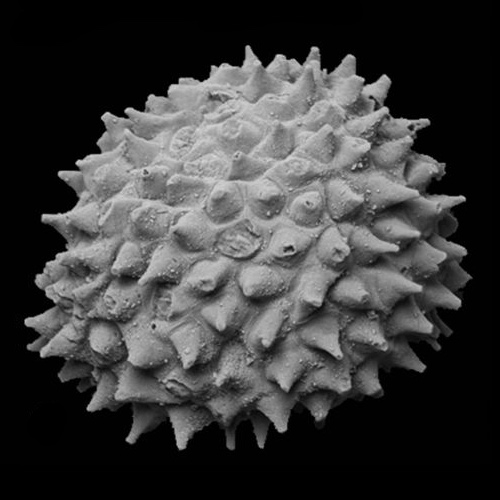
Fossils from the Archean are few and far between. And of those discovered so far, it has proven difficult to determine whether they are really fossils or non-organic geological features.9 Some of the most confidently identified Archean fossils belong to tiny microbes called acritarchs.10 However, the fossilized stromatolites of the Archean may possess indirect evidence for life at that time. Even though there is considerable debate, many geologists think that the sticky substance that allowed sediment grains to stick together to form the stromatolites may be the product of microbes, like bacteria.11
Radiometric Age Clusters
When: Archean to Neoproterozoic
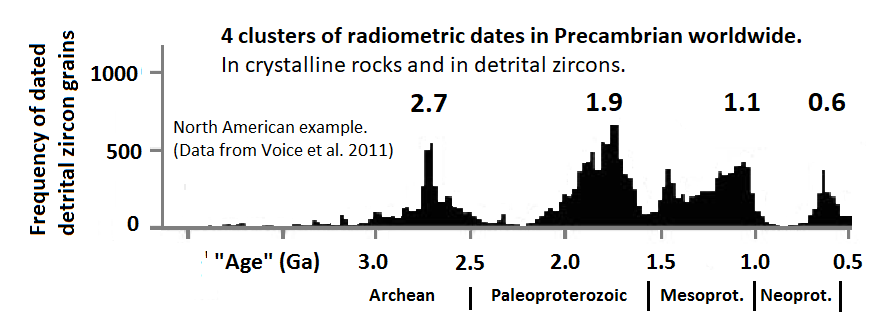
Minerals like zircon crystals are rich in radioactive trace elements.12 Some atoms remain stable, like argon and rubidium. Others, like uranium and potassium, are radioactive. This means they are unstable and change over time through a process called radioactive decay. Geologists use the ratio of unstable to stable atoms in minerals to determine their relative ages.
Precambrian rocks are particularly interesting because radiometric ages obtained from them are not spread out evenly, as one might in a history book. Instead, they tend to be bunched together in groups of ages, no matter where you find these rocks in the world.13,14,15 It is almost like only finding groups of coils from specific years in different places around the planet. Each radiometric age cluster is like a signpost for a big event that happened in Earth’s history.
If we assume the ratio of unstable atoms to stable atoms reflects the actual passage of time that has occurred since the rock hardened, the most abundant ages are 2.70 billion years, 1.85 billion years, 1.05 billion years, and 0.60 billion years. Since radioactive decay produces heat, each of these radiometric age clusters corresponds with a heating event that took place within the Earth’s crust. And each heating event was responsible for triggering an event that shaped Earth as we know it.
Precambrian Heating Events:
- Kenoran (late Archean): This event saw the cooling and release of heat from the Earth’s older, hotter outer layer in different areas. It marked the start of stable, solid pieces of land called “cratons.”
- Hudsonian (late Paleoproterozoic): During this event, Archean rocks experienced much heat and pressure, causing them to fold and squeeze.
- Grenvillian (late Mesoproterozoic): This event saw the thickening of the Earth’s crust, forming high mountain ranges.
- Pan-African (late Neoproterozoic): This event is associated with the splitting apart of the pre-Pangaean supercontinent in combination with immense erosion of the continents and enormous flows of water.
“Hadean” Zircon Crystals
When: Archean
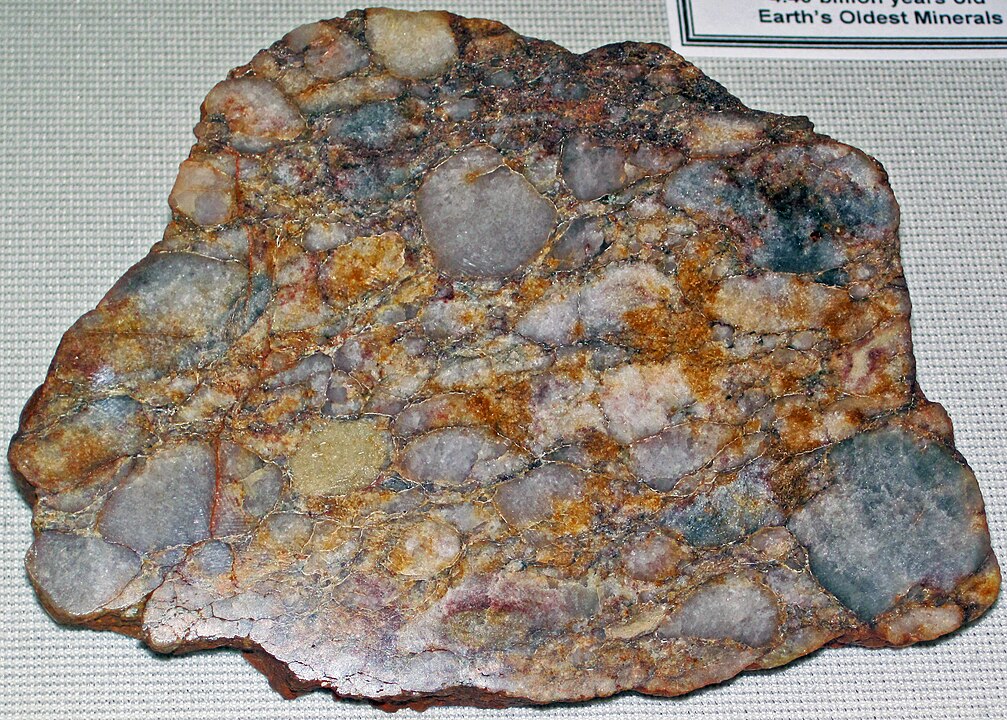
Rocks from the Hadean are the oldest of all existing earth rocks.
If you’re remembering we said earlier that the Archean is the oldest sequence of rock layers on Earth – you’re right! Because the Hadean rocks do not exist as a layer. This makes them perhaps the most mysterious of Precambrian rocks.
All we have left of the Hadean are mineral zircon crystals. In the late 20th century, geologists discovered these crystals inside of other rocks. But these rocks dated younger than the crystals themselves! These incredibly tough crystals survived the deconstruction of their parent rocks by working their way into the younger rocks we find them in today. The oldest zircon crystals―indeed, the oldest known Earth rocks!―were found in Archean rocks in the Jack Hills of Western Australia.16
What About Mount Rushmore?
We would be remiss if we did not discuss the geology of our own national symbol in Mount Rushmore. As stated previously, the presidental faces of George Washington and company are carved into the Black Hills. This specific cliff face is primarily composed of the igneous rock, granite. However, the Black Hills are also made up of metamorphic rocks, such as schist, gneiss, and pegmatite. The Black Hills stand out as an island of forested hills surrounded by the relatively flat Great Plains.
Conclusion
As you can see, fully understanding the Precambrian is no small feat. It is a complex sequence of rocks, with each layer denoting unusual features that can provide us with clues as to their history. In part three of this series, we will see how old-earth geologists interpret the history of the Precambrian layers so we have a better understanding of our fundamental differences of opinion.
Acknowledgements
The author wishes to thank Harry Dickens for his involvement in the research and development of this article.
Pilgrimage Through the Precambrian Series
The Story of Ancients (Part III)
Chinks in One’s Crust (Part IV)
The Future of the Precambrian Past (Part VI)
Footnotes
- UNESCO World Heritage Centre. (n.d.). “Vredefort Dome.” Retrieved September 16, 2021. ↩︎
- “Sudbury.” Earth Impact Database. Planetary and Space Science Centre University of New Brunswick Fredericton. Retrieved June 29, 2023. ↩︎
- The Mesoproterozoic, 1 October 2004, http://www.palaeos.com/Proterozoic/, 20 October 2006. ↩︎
- McDannell, K. T., & Keller, C. B. (2022). “Cryogenian glacial erosion of the central Canadian Shield: The “late” Great Unconformity on thin ice.” Geology, 50(12), 1336-1340. ↩︎
- Monroe, JS, and R Wicander (1997) The Changing Earth: Exploring Geology and Evolution, 2nd ed. Belmont: West Publishing Company, 1997. p. 533-534. ↩︎
- Peters, S.E. and Gaines, R.R., Formation of the ‘Great Unconformity’ as a trigger for the Cambrian explosion, Nature 484(7394):363–366, 2012. ↩︎
- Grosberg, RK; Strathmann, RR (2007). “The evolution of multicellularity: A minor major transition?” (PDF). Annu Rev Ecol Evol Syst. 38: 621–654. ↩︎
- National Heritage Places – Ediacara Fossil Site – Nilpena. (2011, January 11). Department of Agriculture, Water and the Environment. ↩︎
- Brasier, M.D., et al. 2002. “Questioning the evidence for Earth’s oldest fossils.” Nature. 416(6876): p. 76-81. ↩︎
- Rozanov, A. & Astafieva, M.. 2020. “Archean Eukaryotes: A New Outlook.” Paleontological Journal. 54. 1-5. 10.1134/S0031030120010086. ↩︎
- Riding, R. 2007. “The term stromatolite: towards an essential definition”. Lethaia. 32 (4): 321–30. ↩︎
- Hawkesworth, C.J., B. Dhuime, A.B. Pietranik, P.A. Cawood, A.I.S. Kemp, and C.D. Storey. 2010. “The generation and evolution of the continental crust.” Journal of the Geological Society, London 167:229-248. ↩︎
- O’Neill, C., A. Lenardic, and K.C. Condie. 2013. “Earth’s punctuated tectonic evolution: cause and effect.” In Continent Formation Through Time, eds. N.M.W. Roberts, M. van Kranendonk, S. Parman, S. Shirey, S. and P.D. Clift, pp. 17-40. Geological Society, London, Special Publications 389. ↩︎
- Condie, K.C., and R.C. Aster. 2010. “Episodic zircon age spectra of orogenic granitoids: The supercontinent connection and continental growth.” Precambrian Research 180:227-236. ↩︎
- Condie, K.C., N. Arndt, A. Davaille, and S.J. Puetz. 2017. “Zircon age peaks: Production or preservation of continental crust?” Geosphere 13, no. 2:227-234. ↩︎
- Wilde, Simon A.; Valley, John W.; Peck, William H.; Graham, Colin M. (2001). “Evidence from detrital zircons for the existence of continental crust and oceans on the Earth 4.4 Gyr ago“. Nature. 409 (6817): 175–178. ↩︎

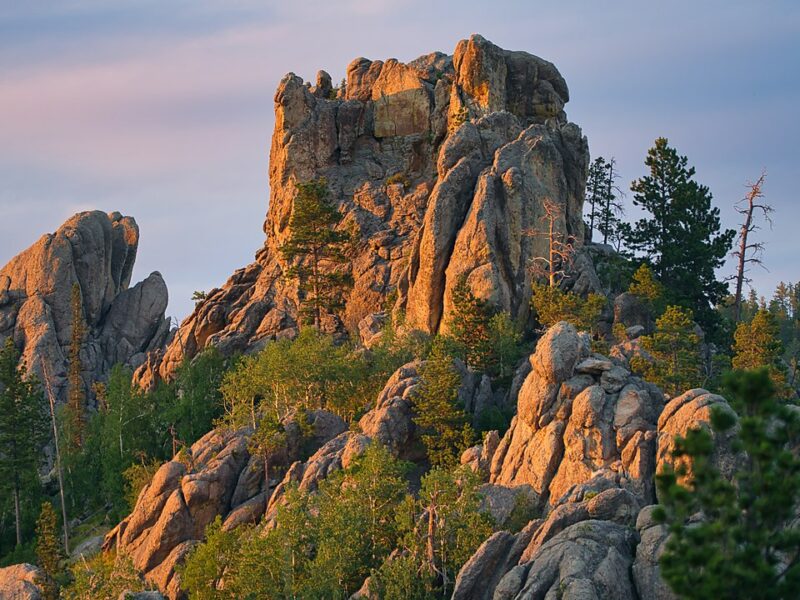
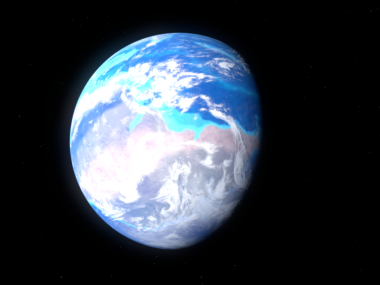




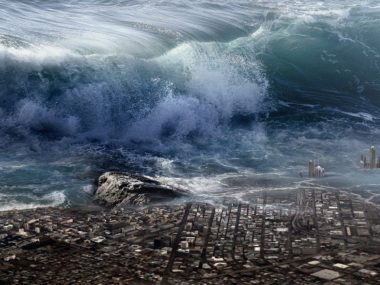




A bit late to comment perhaps…
This is a strange use of atoms in this sentence.: “Minerals like zircon crystals are rich in trace elements, known as atoms.”
Of course, all elements are atoms. I’m not sure what you were going for here.
Thank you for bringing this to our attention, Ted. We have updated the article accordingly. 🙂